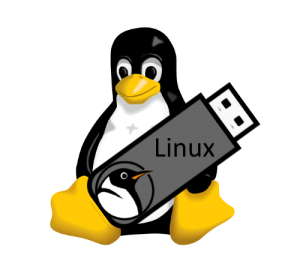This is a basic Linux networking task and can be done via command line and graphical interface. The NetworkManager software is used to create and view network connections with graphical interface, which may look different depending on the desktop environment. Because the NetworkManager is easy to use and has a lot of front ends, this tutorial will cover only the command line method, we will use the ip and ifconfig commands, it’s recommended to use the ip command because ifconfig is obsolete, so open your favorite terminal emulator and let’s start!
Display network devices, state, MAC address, IP address, network class and statistics
As you see I have three interfaces, “lo” is the loopback interface, “eth0” the wired network card and “wlan0” the wireless card, I am using the classic naming scheme.
ip -s addr
1: lo: <LOOPBACK,UP,LOWER_UP> mtu 65536 qdisc noqueue state UNKNOWN group default qlen 1 link/loopback 00:00:00:00:00:00 brd 00:00:00:00:00:00 inet 127.0.0.1/8 scope host lo valid_lft forever preferred_lft forever inet6 ::1/128 scope host valid_lft forever preferred_lft forever RX: bytes packets errors dropped overrun mcast 2640 44 0 0 0 0 TX: bytes packets errors dropped carrier collsns 2640 44 0 0 0 0 2: eth0: <BROADCAST,MULTICAST,UP,LOWER_UP> mtu 1500 qdisc pfifo_fast state UP group default qlen 1000 link/ether 00:00:00:00:00:01 brd ff:ff:ff:ff:ff:ff inet 192.168.0.2/24 brd 192.168.0.255 scope global eth0 valid_lft forever preferred_lft forever inet6 fe80::5ef3:fcff:feec:f454/64 scope link valid_lft forever preferred_lft forever RX: bytes packets errors dropped overrun mcast 149454253 137261 0 0 0 40 TX: bytes packets errors dropped carrier collsns 16640485 92276 0 0 0 0 12: wlan0: <BROADCAST,MULTICAST> mtu 1500 qdisc mq state DOWN group default qlen 1000 link/ether 00:00:00:00:00:02 brd ff:ff:ff:ff:ff:ff RX: bytes packets errors dropped overrun mcast 0 0 0 0 0 0 TX: bytes packets errors dropped carrier collsns 0 0 0 0 0 0 Legend: Interface, State, MAC Address, IP Address, Network Class, Statistics
Or with the obsolete ifconfig
ifconfig -a
eth0: flags=4163<UP,BROADCAST,RUNNING,MULTICAST> mtu 1500 inet 192.168.0.2 netmask 255.255.255.0 broadcast 192.168.0.255 inet6 fe80::5ef3:fcff:feec:f454 prefixlen 64 scopeid 0x20 ether 00:00:00:00:00:01 txqueuelen 1000 (Ethernet) RX packets 59133 bytes 35479715 (33.8 MiB) RX errors 0 dropped 0 overruns 0 frame 0 TX packets 46498 bytes 9805836 (9.3 MiB) TX errors 0 dropped 0 overruns 0 carrier 0 collisions 0 device interrupt 16 memory 0xf7ca0000-f7cc0000 lo: flags=73<UP,LOOPBACK,RUNNING> mtu 65536 inet 127.0.0.1 netmask 255.0.0.0 inet6 ::1 prefixlen 128 scopeid 0x10loop txqueuelen 1 (Local Loopback) RX packets 124 bytes 7440 (7.2 KiB) RX errors 0 dropped 0 overruns 0 frame 0 TX packets 124 bytes 7440 (7.2 KiB) TX errors 0 dropped 0 overruns 0 carrier 0 collisions 0 wlan0: flags=4098<BROADCAST,MULTICAST> mtu 1500 ether 00:00:00:00:00:02 txqueuelen 1000 (Ethernet) RX packets 0 bytes 0 (0.0 B) RX errors 0 dropped 0 overruns 0 frame 0 TX packets 0 bytes 0 (0.0 B) TX errors 0 dropped 0 overruns 0 carrier 0 collisions 0 Legend: Interface, State, MAC Address, IP Address, Network Class, Statistics
Displaying the routing table, 192.168.0.1 is my default gateway
ip route
default via 192.168.0.1 dev eth0
Or with the obsolete route and netstat commands
route -n
Kernel IP routing table Destination Gateway Genmask Flags Metric Ref Use Iface 0.0.0.0 192.168.0.1 0.0.0.0 UG 0 0 0 eth0
netstat -nr
Kernel IP routing table Destination Gateway Genmask Flags MSS Window irtt Iface 0.0.0.0 192.168.0.1 0.0.0.0 UG 0 0 0 eth0
Displaying DNS servers
cat /etc/resolv.conf
nameserver 192.168.0.1
Change (spoof) the MAC address
ip link set dev eth0 downip link set dev eth0 address 11:11:11:11:11:11ip link set dev eth0 up
Or with the obsolete ifconfig
ifconfig eth0 downip link set dev eth0 address 11:11:11:11:11:11ifconfig eth0 up
The modification with ip and ifconfig are not reboot proof, in order to make the change reboot proof you can use NetworkManager
nmcli connection modify eth0 ethernet.cloned-mac-address 11:11:11:11:11:11nmcli connection up eth0
